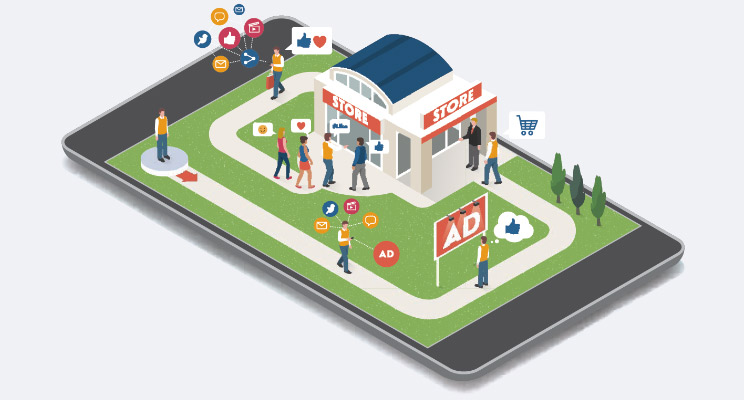Consumer-facing businesses are crippled by every-growing touchpoints and siloed systems that don’t speak to each other. A complete overhaul of these legacy technologies isn’t an option – it costs prohibitive with a long-drawn-out time to value.
Yet, they need a way to quickly connect these individual systems for an end-to-end view of the customer journey analytics. Customers today hunt down what they want at the price they want. They are open to sharing their data and being followed in their purchase journeys if they get value in return – whether it is in the form of better experience, elevated service, convenience, special offers or exclusive treatment.
For marketers, delivering on heightened customer expectations requires the use of customer journey analytics software at scale – acting on customer moments as they happen. Instead of reacting to customer-created journeys and go where they are going, you need the tools to manage, influence and even mold their routes to maximize their experience and your sales. Offering guidance, timely reminders (and perhaps a special offer) to customers who are wavering during the shopping process can yield significant business gains – reduced cart abandonment and improved conversions.
With more digital channels getting added to the mix, customer decision journeys are now maze-like.
We suggest five essential steps to set-up your customer journeys, without having to start-over:
- Collect all customer data – chances are you already have this in different systems. It is important to include all browsing and transactional data, irrespective of whether the journey resulted in a purchase
- Connect the existing data sources – Given the expansiveness of digital journeys and the variety and volumes of data, this isn’t likely to be easy but forms the foundation. This includes cleansing, organizing and resolving identity disputes. Given that retail business, today is as much about the seamless flow of information as it is about the flow of goods; it is important to have good data governance in place. Consider a Customer Data Platform that unifies all customer data.
- Switch on the data science – Start with connecting touchpoints during a single journey in real-time; to analyze customers’ deflection points, unusual behaviors, channel preferences and the kind of information they seek during their moments with your business. Some customers see more images, some are interested in product information, others read more reviews, while some other scout for offers. These elements are important to truly understand customer behavior and underlying reasons for jumping channels and device.
- Follow-up with the right messages. Now that you know where customers are in their journey and what they value, personalize interfaces such as email, website, mobile app. Customer insights, together with your expertise can help serve meaningful messages on the relevant channel that moves customers towards purchase decision or even do away with a likely hurdle as a special case (such as high shipping fee, few payment options etc.).
- Visualize journeys across the entire customer lifecycle. Connect a customer’s entire relationship to know whether she is just warming up to your brand, a repeat buyer, a loyal customer or at-risk of moving to your competition. This insight can be used to nurture the relationship over time and achieve upsell and cross-sell. Machine learning and predictive models iteratively improve journey performance and assess what individual journeys she is on at present, and what impact these have on each other and on the lifecycle.
In all of this, it is critical to continuously form and test hypotheses, measure outcomes and re-calibrate tactics for maximum impact. By automatically getting data-driven answers to questions such as ‘what kind of messages will further the customer’s journey’, ‘what is the best time to communicate with a customer to incite a favourable action’, and ‘which channel is likely to be effective for a wavering customer’, marketing analysts can maximize returns and optimize spend.
Conclusion
Today’s competitive retail environment requires a Journey Analytics tool that is built for scenarios specific to retail. It can enable marketers to create impactful customer-centric campaigns that target their path-to-purchase and measure journey targeting outcomes.
It is important that customer journey analytics tools automatically identify the best paths for each behavioral segment, with technology doing the heavy lifting of picking the most-suited channel combinations (basis both customer and fashion retail context) and best moments to communicate, with the end goal of accelerating conversion. The system should automatically be able to place customers in the precise lifecycle stage and move them towards the desired stage and outcome through micro-journeys along the way.
Getting these critical components spot-on and combining them with predictive insights can help you drive revenue. The results are bound to be superior to workbench-based tools, that only allow creating pre-defined paths and cannot react in real time to customer behaviors and actions.


























